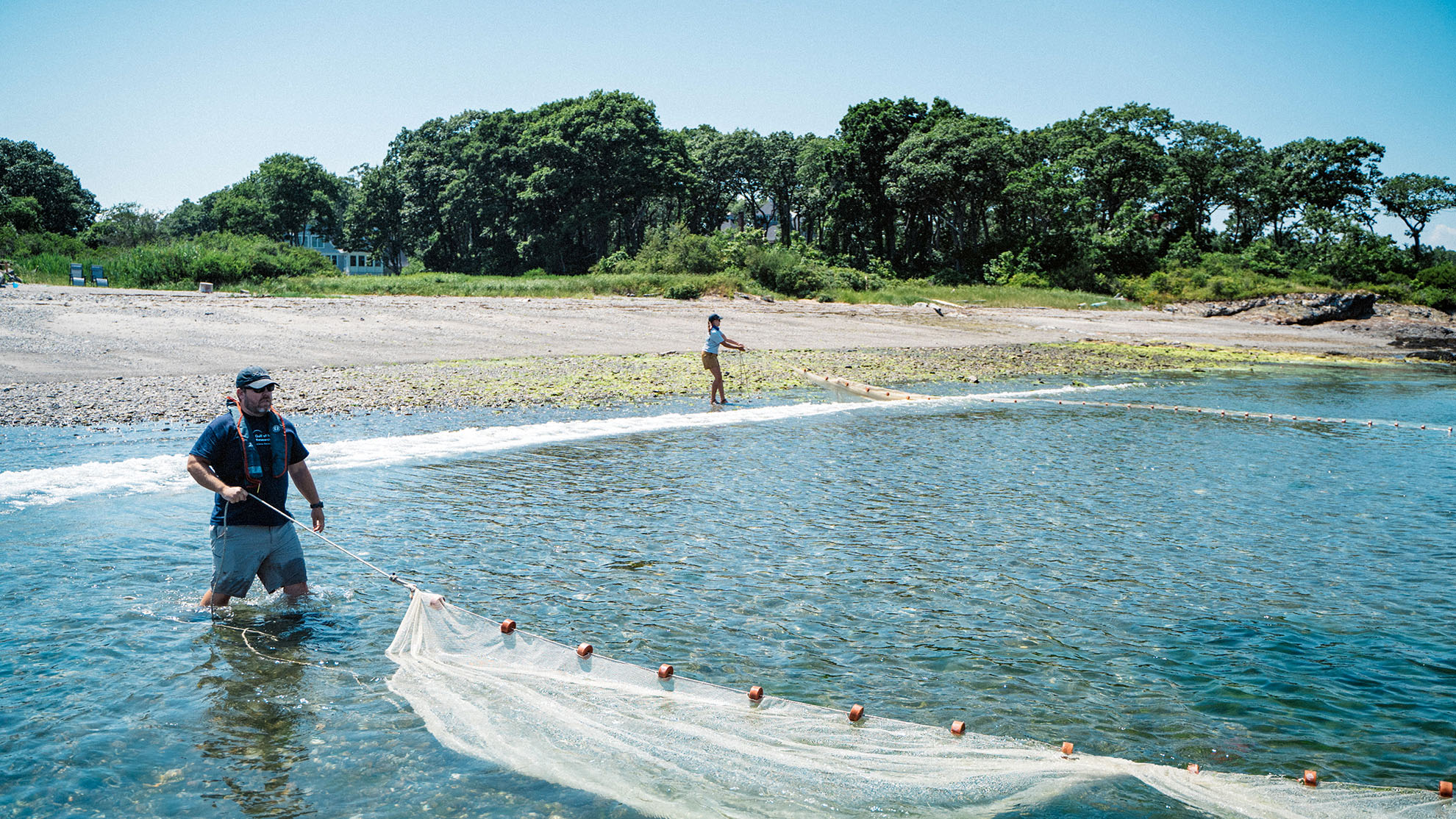
Building a Surveying Toolkit: eDNA and Traditional Observation Methods with Aaron Whitman
By Ilaria Bardini, Writing Intern

Environmental DNA (eDNA) may be the answer for the detection and monitoring of vital species in the Gulf of Maine and freshwater systems. Across the NSF EPSCoR RII Track-1 Maine-eDNA grant, researchers are spearheading the development of novel eDNA techniques. With climate change impacting species behavior, dynamics, and oceans and freshwater systems, eDNA detection tools serve as a necessary tool for the future of decision making and management of Maine’s waters.
Aaron Whitman is a University of Maine master’s student in the School of Marine Science and a Senior Research Associate at the Gulf of Maine Research Institute (GMRI) where he has been for over eight years. When first starting, Whitman worked in GMRI’s Gear Lab, redesigning fishing gear for the reduction of bycatch. In 2019, he relocated to the Fisheries Ecology Lab under the advisory of Graham Sherwood, a Research Scientist at GMRI and researcher with Maine-eDNA. Although he still has one foot in gear design, Whitman’s is primarily focused on work in fish ecology and corresponding topics in eDNA research under the advisory of Mike Kinnison, Professor of Evolutionary Applications at the University of Maine.
Whitman’s research focuses on the comparison between traditional observation methods and novel eDNA techniques for marine and freshwater system surveying. “The Maine-eDNA project lines up with the Casco Bay Aquatics Systems Survey (CBASS) that I am working on.” Whitman remarked. “We have a baseline of data that we already had before our use of eDNA. We are beginning to introduce eDNA techniques and compare the results.” With an interest in sustainable fisheries, part of Whitman’s work focuses on alewife, an ecologically and economically significant anadromous species of herring native to Maine. “When we do observational work to monitor if alewife have entered the Presumpscot River, we take eDNA samples above and below the falls to see if eDNA can detect fish migration before we see it.” Alewife populations have dramatically decreased and the use of eDNA tools may help in the management of this culturally important species. Exploring shifts, like that of alewife, in species populations, migratory patterns, and species dispersion is essential to supporting Maine aquaculture industries.
Beach seining, another traditional method in ocean system surveying, is the use of a large net cast off from a shoreline, creating a “U” shaped funnel for fish entrapment. With the application of this technique, Whitman monitors 12 fish identification sites in Casco Bay. “We incorporate eDNA by taking three samples.” Whitman says “One 100 meters out, another at 50 meters, and the third on shore.” With prior knowledge of fish species in those areas, Whitman and his team analyze how their obtained eDNA results align with their observed identifications.
“We’re trying to compare how eDNA works with various survey types.” Whitman explains. “The goal is to be able to trust eDNA in marine science, especially in more complex environments with dynamic tidal cycles.” Developing tools that can accurately tell a story about species presence in even the most uncertain environments is, according to Whitman, only scratching the surface. “The eDNA fields are growing. With many new techniques to be tried, there’s so much potential for the future of eDNA. Knowing I’m helping to pioneer the techniques that will be used in management efforts is truly rewarding.”
